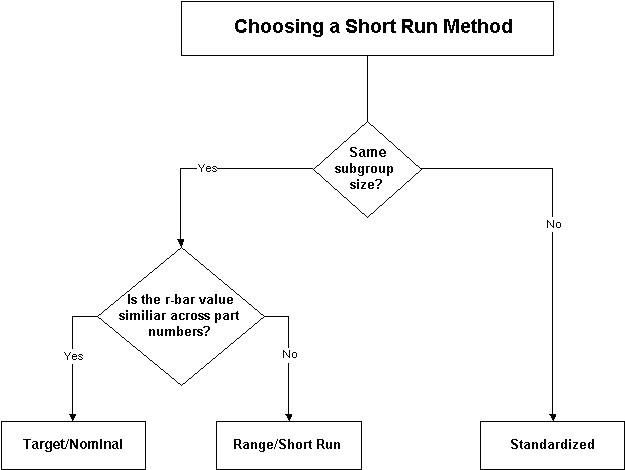As described in this post, Short Run SPC (Statistical Process Control) relies on clever coding techniques to deal with the expected variation in a process. Once you strip out the expected variation, any variation you have left is the true variation of the process. You can plot this on a control chart and treat it as you would any other process data.
The key to coding the data effectively is to form families and retrieve the coded data by family. The challenge arises when one begins to form these families. What constitutes a family? The basis for family categories must be logical, rational and meaningful in understanding the process. Some are obvious: similar part geometry, similar materials, similar operations, etc.
Remember that we wish to focus on Process Control and not Product Control. A shop may produce many different part numbers on a single machine. While each run is different, the same operations are performed over and over. Different types of families can be formed depending on the processes. A step in forming these families is to identify which coding method applies.
There are three methods of coding Short Run data, Target/Nominal, Range/Short Run, and Standardized. Here is a flow chart for helping you select the correct coding method:
(Click to open full size in new window.)
Use the Target/Nominal method when the target or nominal values vary from product to product, but the expected variation is the same and the subgroup size is constant. A good example of this are fill weights for packaged goods. In this situation the manufacturer may be putting the same product in a variety of package sizes to sell through different channels. Because the same commodity (a liquid with a constant viscosity and density) is going in each bottle, the expected variation in the fill weights from bottle to bottle is the same, and the company always uses the same subgroup size. The only thing that changes is the target weight (4, 8, 16, or 64 oz size, for example). Other examples are film thicknesses or machined features such as OD or length.
The second type of coding method is the Range/Short Run method. Use the Range/Short Run method when you are not confident that your process contains the same amount of variation from part to part.
For example, a rubber molder makes similar products with very different materials. Some of the products have a very high carbon content, and are therefore very stiff. They have a very tight tolerance. Other products have a high silicon content and are soft – even mushy. They have very loose tolerances. This is a great application for the Range/Short Run method because both target and tolerance vary. The Range/Short Run method makes it possible to see charts that are not biased by a known and expected source of variation in either the target or the range.
The third coding method is the Standardized control chart. Use if when you have different subgroup sizes for different part numbers. The Standardized Chart codes out expected variation in Target and Range, and, removes the expected variation due to differences in subgroup size.
These three coding methods will account for every short run situation that you are likely to encounter. Let me know how they apply in your situation. Use the ShareThis button below to mark this page, or leave a comment, tweet me, schedule a conversation, or call 800-958-2709.
4 Comments
Comments are closed.


Short runs are our lively hood. I now work as an SPC coordinator and Quality Engineer for a 600 employee facility. Mulitple change overs on a single machine are common, some times three a shift per machine. So implementing SPC is going to be a great challenge. To date since about 1992 they have used run charts only. It is my job to make SPC a robust system and short run is what I need so I am looking at all options. Hoping some of your ideas will help me with this, great stuff.
Hi, Im working in a short run / high mix products metal mechanic process.
Your articles are very interesting. part of my job is launch SPC. So I would like to have a good start, in the past, only few trials with XR charts, that were not good enough.
Any help and suggestions with Short Run SPC s welcome
Thanks for your comments, Arturo. I wrote a post with my suggestions for getting started, and I hope to hear from other readers. Hope this helps.
Evan
Hi Evan: Good to hear from you. My only comment on the standardized piece is that you consider using the control chart that adjusts the control limits based on each subgroup size, so that the chart looks like a skyscraper cityscape. But you’ve probably already considered this, and have gone the standardized route for some reason(s) — which we can discuss if you’d like.
Hope all is well. It’s been a while!
Cheers, Bruce